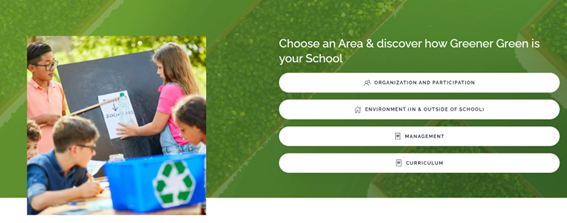
Nurturing Young Minds: The Vital Role of Teaching Sustainability and Circular Economy in Primary Schools
In today’s rapidly changing world, instilling a sense of responsibility towards the environment is becoming more critical than ever. And where better to start than with our youngest generation? Teaching sustainability and circular economy principles in primary schools is not just a choice; it’s a necessity. This is the reason why our Greener Green project was born.
But let’s go beyond; we say and know it’s important, but what should we promote in children to increase their awareness and action towards adopting a healthy lifestyle? Here you can read some points:
1. Fostering Environmental Stewardship:
When we introduce sustainability concepts to young minds, we’re sowing the seeds of environmental awareness. Children learn to appreciate the natural world, understand the impact of human actions, and develop a deep sense of responsibility to protect it. This early education lays the foundation for a generation that cares about the planet.
2. Critical Thinking and Problem Solving:
Sustainability education encourages critical thinking. Children learn to analyse complex issues, identify problems, and explore creative solutions. Whether it’s reducing waste, conserving resources, or finding eco-friendly alternatives, these skills will serve them well throughout their lives.
3. Empowering Future Decision-Makers:
The children of today are the leaders and decision-makers of tomorrow. Equipping them with knowledge about sustainability and circular economy principles empowers them to make informed choices. Whether it’s as consumers, voters, or professionals, they’ll be better equipped to drive positive change.
4. Teaching Resourcefulness:
Circular economy education teaches kids the value of resources and how to make the most of them. Instead of promoting a throwaway culture, it encourages resourcefulness, recycling, and upcycling. These skills not only benefit the environment but can also save money in the long run.
5. Connecting Learning to Real-Life Scenarios:
Sustainability and circularity are tangible concepts that can be applied to everyday life. By integrating these topics into the curriculum, children can see the direct relevance of what they learn. Whether it’s through classroom recycling programs or eco-friendly projects, they experience the impact of their actions firsthand.
6. Inspiring Innovation:
Children are naturally curious and imaginative. Teaching them about sustainability and circular economy concepts can spark their creativity. They may develop innovative solutions to environmental challenges or even pursue careers in green industries, contributing to a more sustainable future.
With the Greener Green assessment tool and the content platform, we assist teachers and students in all the aspects mentioned above. We encourage you to discover everything we have created, with the help of schools and educators, to support schools in sustainability education. We are currently in the final testing phase of these two tools, which we hope you will find enjoyable! Let’s go green!
 Financiado por la Unión Europea. Las opiniones y puntos de vista expresados solo comprometen a su(s) autor(es) y no reflejan necesariamente los de la Unión Europea o los de la Agencia Ejecutiva Europea de Educación y Cultura (EACEA). Ni la Unión Europea ni la EACEA pueden ser considerados responsables de ellos.
Financiado por la Unión Europea. Las opiniones y puntos de vista expresados solo comprometen a su(s) autor(es) y no reflejan necesariamente los de la Unión Europea o los de la Agencia Ejecutiva Europea de Educación y Cultura (EACEA). Ni la Unión Europea ni la EACEA pueden ser considerados responsables de ellos.